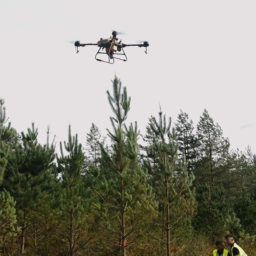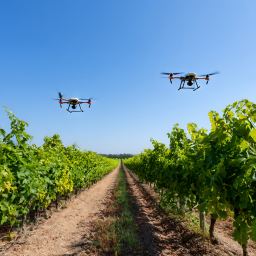NEW
Fertilizer consumption reduction in a pioneering pilot test using precision agriculture
28 May 2021Fertilizer consumption reduction in a pioneering pilot test using precision agriculture
- This was done in the NITRALDA project, using variable-rate fertiliser application technology for the first time in the Basque Country. It adapts the fertiliser to the needs of the crop based on limitation maps.
- The project is in line with the Basque government’s strategy of digitising small and medium enterprises, aimed at improving the efficiency and sustainability of agro-ecosystems
- Three pilot tests were carried out to test the highest possible number of combinations and a manual was created with the information necessary to implement this precision agriculture technique
Within the framework of the NITRALDA project, we were able to reduce nitrogen fertiliser use by 19% by utilising for the first time in the Basque Country the variable-rate fertiliser technique, which allows the application to be adapted to the crop’s needs. This is a precision farming technique that uses limitation maps to streamline and reduce the use of fertilisers without reducing yields.
Reducing the use of fertilisers is one of the key points of the European Green Deal, the Farm to Fork strategy, which sets the goal of reducing the use of fertilisers by 20% by 2030.
The NITRALDA project, where NEIKER is working with farmers like Javier Álava and the Torre brothers, in addition to GARLAN S Coop., Unión Agroganadera de Alava (UAGA) and HAZI Fundazioa, is funded by the Department of Economic Development, Sustainability and Environment of the Basque government and operates in line with its strategy of digitising farming, especially in small and medium-sized enterprises. The aim of the strategy is to boost the efficiency and sustainability of agroecosystems.
Estimated wheat yield from pilot plots
The NEIKER team has developed a model able to predict the yield of the pilot wheat plots based on crop status data obtained from the Sentinel-2 (European Space Agency) satellite and plot morphology data on Geoeuskadi (www.geoeuskadi.eus).
Data from a yield monitor reporting the kilos of grain harvested in each area of the plot was used to train the model. Once the model had been trained and validated, it was used on three pilot plots (a total of 19 hectares in Araba) generating three approximate yield maps. These maps were compared by farmers and the GARLAN specialist so they could offer up their ideas and verify that the maps actually corresponded to the reality on the ground.
With all this data, a limitation map was created for each plot, dividing up the areas where the different amounts of fertiliser would be applied. To apply this limitation map, it is introduced into the tractor monitor in the format required by the manufacturer, so the spreader knows how much fertiliser to spread in each area of the plot.
Compared to the traditional method of spreading fertiliser, during the testing, one of the three plots was able to reduce the amount of nitrogen fertiliser applied by 19%.
The variable-rate fertiliser technique was assessed using three combinations of monitors and spreaders. Specifically, these devices were the John Deere system (Javier Álava), Amazone + Trimble (Torre brothers) and Khun + Topcom (NEIKER).
Finally, a manual was written with the steps to be followed in the three monitor plus spreader combinations used in the test so as to incorporate the variable-rate fertilisation technique.
This project had a total budget of 46,000 euros and was part of the cuisine and food value chain digitisation strategy of the Basque Country (Smart Food Country 4.0).





